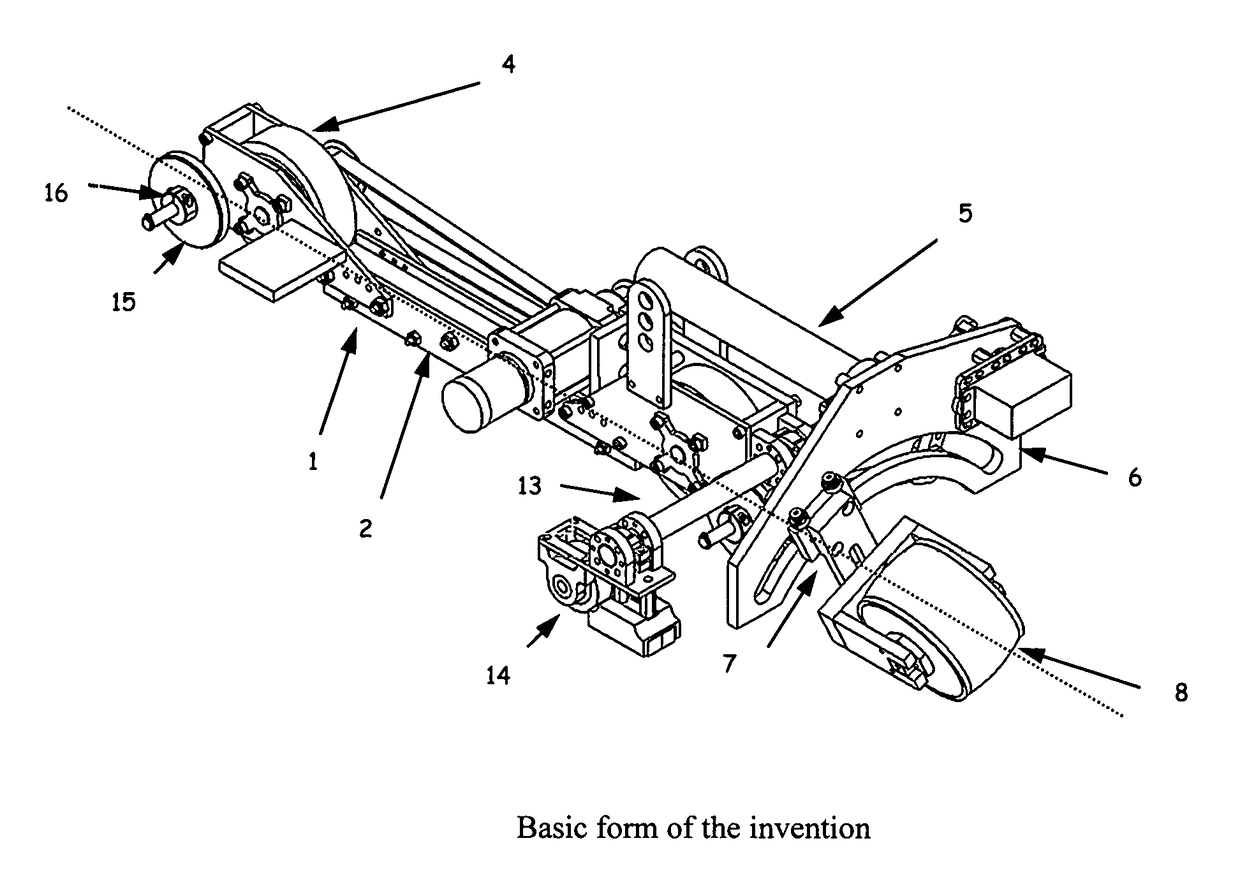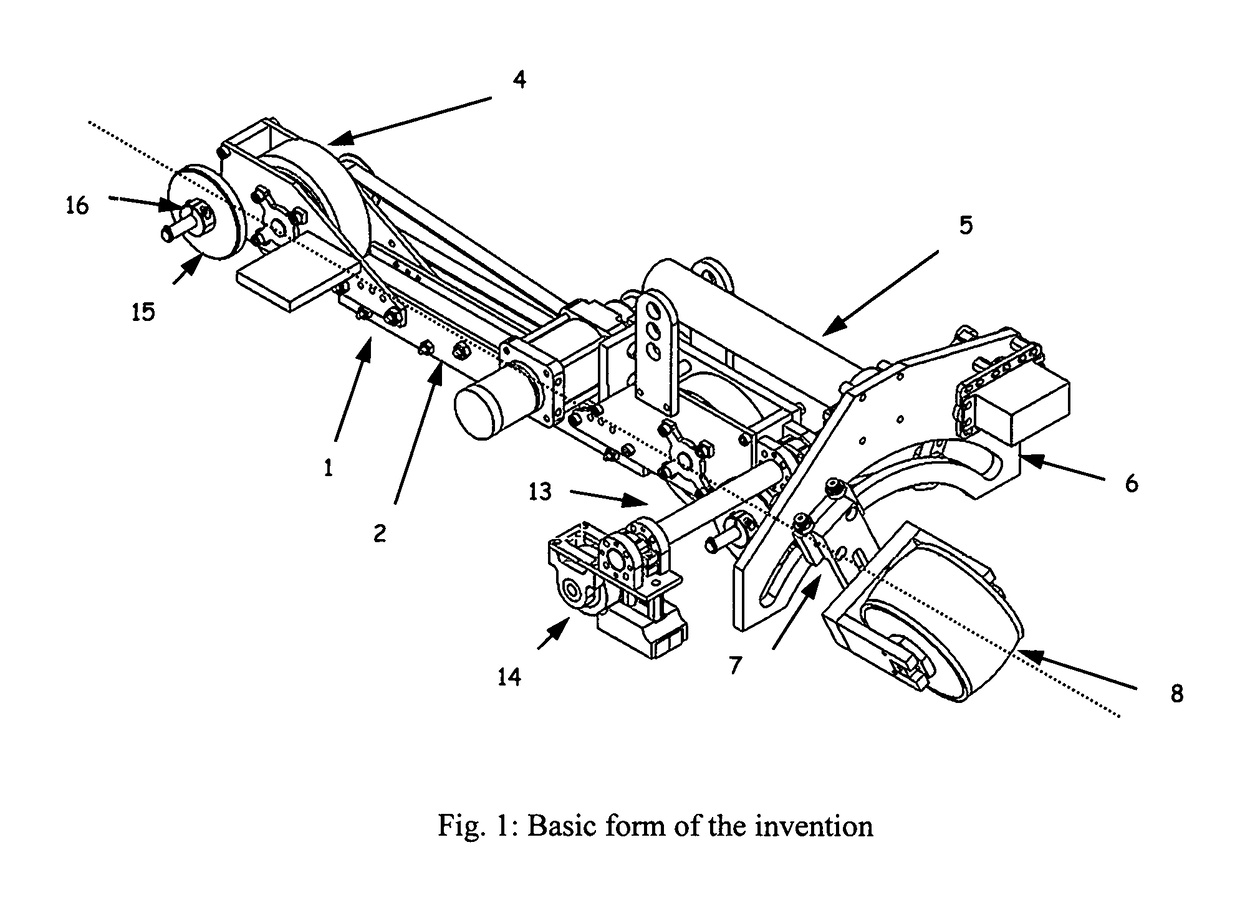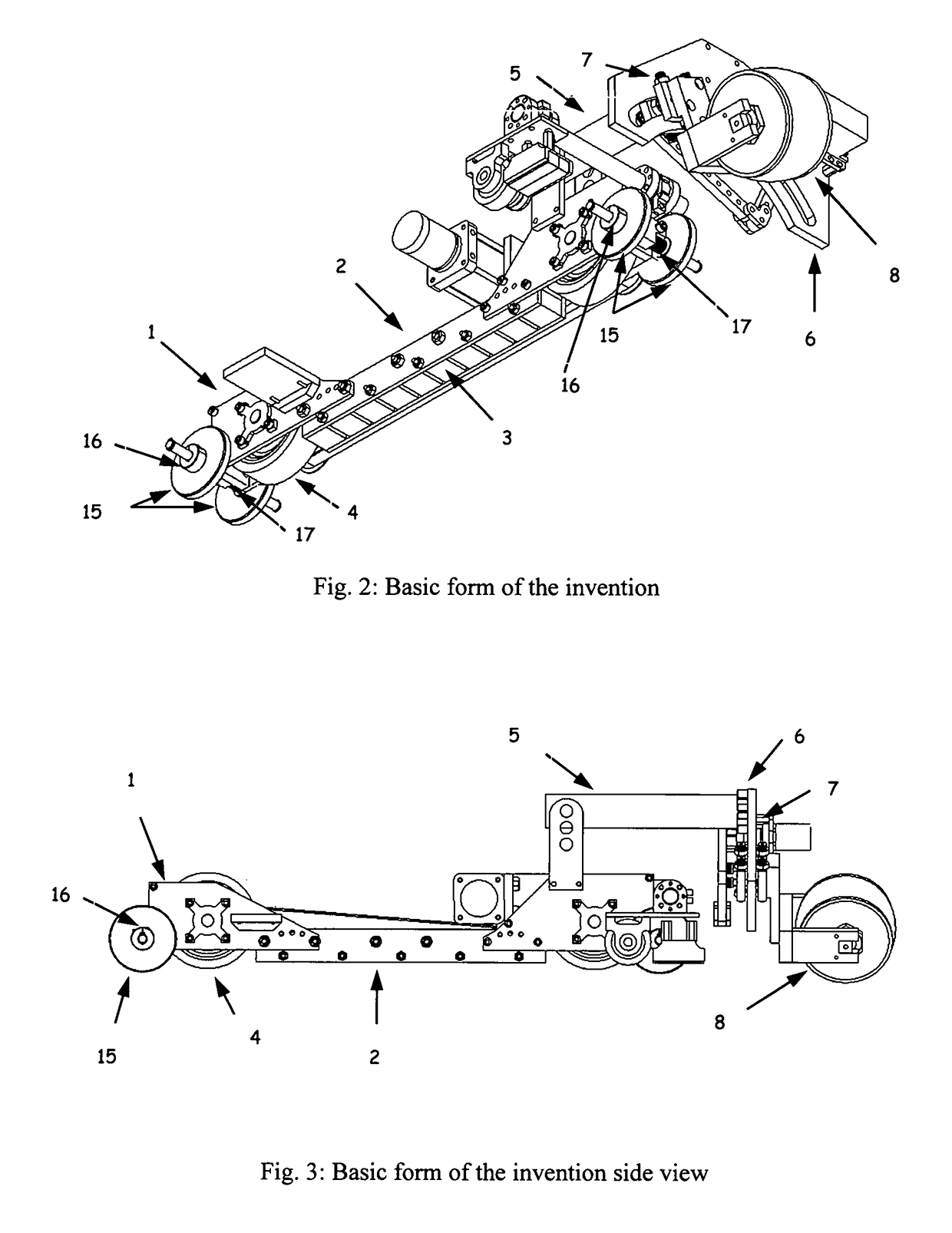One-dimensional climbing vehicle with resilient guide mechanism
a guide mechanism and one-dimensional technology, applied in vehicles, vehicle components, pigs/moles, etc., can solve the problems of increasing complexity of system, increasing kinematic requirements for steering, and reducing efficiency, and achieves constant distance and high payload-to-weight ratio
- Summary
- Abstract
- Description
- Claims
- Application Information
AI Technical Summary
Benefits of technology
Problems solved by technology
Method used
Image
Examples
Embodiment Construction
[0019]The invention disclosed here describes a climbing vehicle, robot or platform that is able to climb ferrous surfaces while accommodating variations in the geometry of the climbing surface and effectively transferring forces between the adhering members and the vehicle chassis while guiding the vehicle along the primary single dimension. In a basic form, the invention consists of a chassis lying along a primary axis (1), resilient guide (2) which plays the dual role of guiding the vehicle along the primary single dimension and providing forces to maintain vehicle equilibrium on the surface, propulsion element (4) and auxiliary lateral support arm (13) and contact pad (14) as shown in FIGS. 1, 2 and 3 The chassis forms the body of the vehicle and can be used to mount payloads, tools or other components. In this case, a tool arm (5) forms the primary attachment to the chassis for carrying tools. A tool mounting plate (6) and moveable tool fixture (7) are shown with an ultrasonic i...
PUM
 Login to View More
Login to View More Abstract
Description
Claims
Application Information
 Login to View More
Login to View More - R&D
- Intellectual Property
- Life Sciences
- Materials
- Tech Scout
- Unparalleled Data Quality
- Higher Quality Content
- 60% Fewer Hallucinations
Browse by: Latest US Patents, China's latest patents, Technical Efficacy Thesaurus, Application Domain, Technology Topic, Popular Technical Reports.
© 2025 PatSnap. All rights reserved.Legal|Privacy policy|Modern Slavery Act Transparency Statement|Sitemap|About US| Contact US: help@patsnap.com



